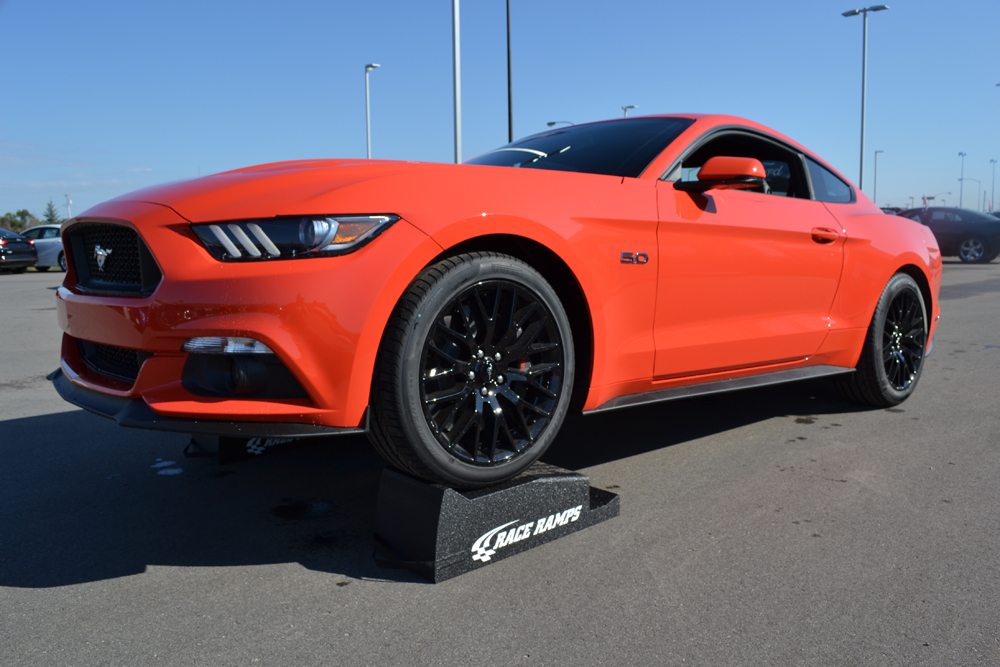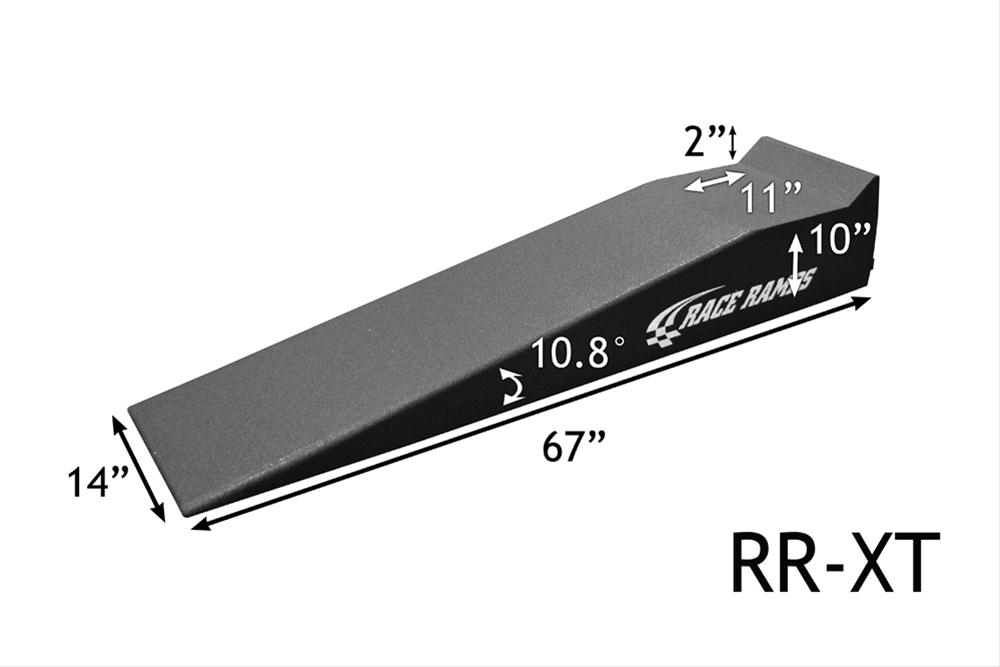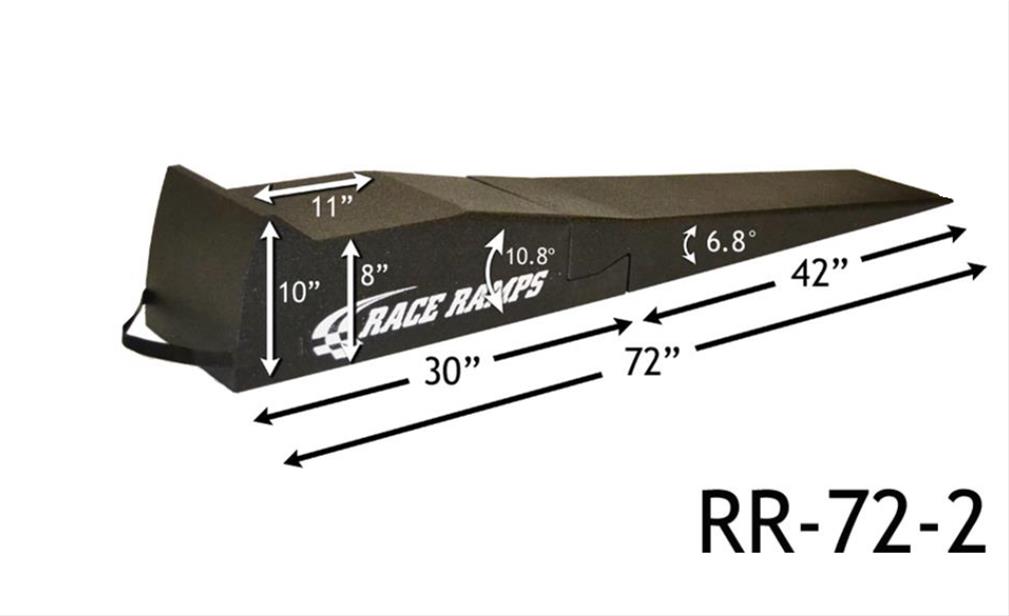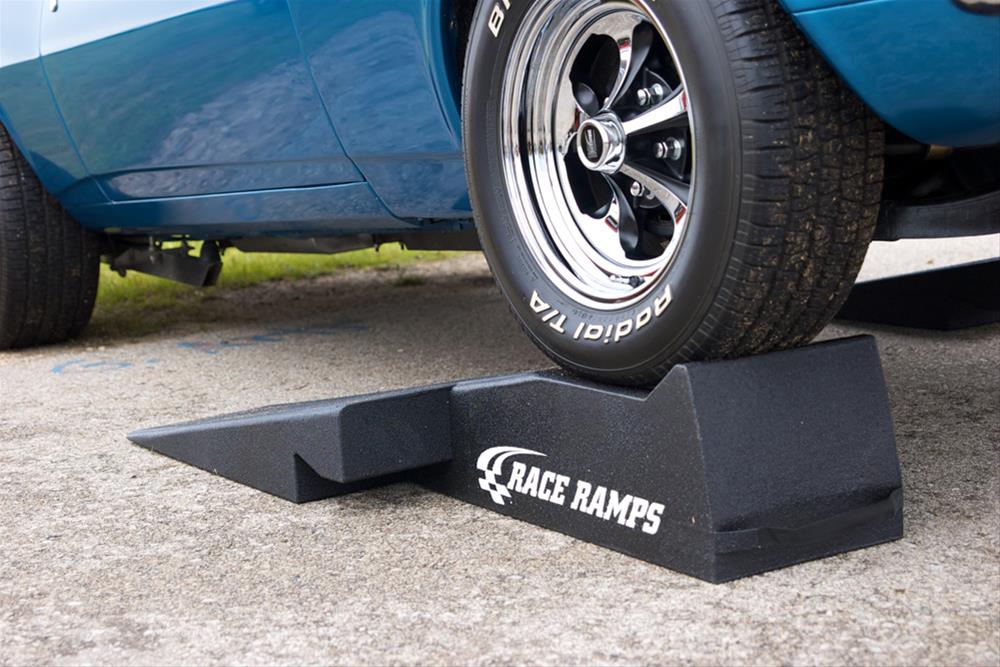It seems like the basic car ramp has been around since the dawn of time—or at least the dawn of the wheel!
Race Ramps has simply built on that tried-and-true ramp design and applied it to the needs of today’s DIY mechanics and motorsports enthusiasts. Race Ramps service ramps provide a convenient, sturdy, safe alternative to jack stands in the garage. And Race Ramps trailer ramps make loading low-profile vehicles onto trailers easier and a damage-free proposition.
There’s no magic behind Race Ramps, but the popularity of the products is no accident.
A U.S. patented manufacturing process makes Race Ramps car ramps sturdy, yet lightweight. A low-angle approach allows them to accommodate vehicles with low ground clearance. Well thought-out, award-winning designs and dimensions allow them to work in a wide range of applications. It’s no wonder some gearheads are reaching for Race Ramps instead of jacks and jack stands when doing maintenance and other projects.
When it comes to choosing a Race Ramps car ramp, there are a few things to consider to ensure you get the right one for your needs.
Constant Incline vs. Two-Stage Incline
Typical service ramps, like the ones you’ll find in your local parts store, feature a 17-degree incline. Race Ramps have have a 10.8-degree angle, making them better for lower vehicles. However, you’ll need to determine just how low your car’s front-end sits before choosing your ramp.
Race Ramps suggests something called the “yardstick test.” Simply take one end of a yardstick and push it up against the inside edge of your front tire. Then, raise the other end of the yardstick until it touches any part of the car (be sure not to bend the stick). You’ll then need to measure the height of the yardstick at the point it touches your vehicle.
Constant incline ramp shown above.
If your measured height is greater than 7.25 inches, a constant incline ramp—one in which the incline angle does not vary—will work for your ride. Any height less than 7.25 inches means you should consider one of Race Ramps two-stage incline ramps.
Two-stage incline ramps begin with an initial incline angle of 6.8 degrees. The approach angle of the car will increase as it climbs this first stage, allowing it to clear the steeper second stage. The second stage is typically 11 to 12 degrees.
Two-stage incline ramp shown above.
Vehicles with less than 3 to 4 inches of clearance call for a progressive incline ramp. This type of ramp features a curve incline surface which increases from 3.5 degrees to 8 degrees as the car climbs.
Car Ramp Length = Height
Service ramps come in different lengths.
With constant incline ramps, the different lengths will ultimately place your vehicle at varying heights. For example, Race Ramps offers constant incline ramps in 56-, 67-, and 80-inch lengths. The 56-inch ramp will put your car 8 inches above the surface, while the 67-inch version will place your vehicle at 10 inches high.
Longer ramps typically cost more, but the higher platform may make it easier to work on the projects you’re planning. On the other hand, Race Ramps offers Rally Ramps, which are considerably shorter but work great for smaller vehicles. Budget and intended use play a role in selecting the right garage ramp.
One-Piece vs. Two-Piece Car Ramps
Both one-piece or two-piece car ramps are available.
It comes down to how much access you want to the sides of your vehicle. Once your car or truck is on the Race Ramps car ramps’ raised platform, the two-piece design allows you to remove the incline portions for complete side access to your vehicle.
Two-piece ramp shown above.
Other considerations include weight capacity and tire width. Always check the weight capacity of the ramps and compare to the weight of your vehicle. There are specific Race Ramps options recommended for trucks and other heavier vehicles.
Race Ramps also offers special ramps for use with lifts. These ramps allow you to get your low-to-the-ground car onto scissor and 2-post lifts. The company also has a full line of trailer ramps, which we’ll look at more closely in a later post.





KM can provide all ranges products for AUTO repair/tools,
our product range include Auto Repair, Outdoor Leisure, Garden Supply,
mainly include Car ramp, Wheel Stooper, Auto Tools, Car Interior Decoration, Folding Wagon, Beach Cart, Floor Mats, Garden Cart, Garden Sweeper, Hand Truck, Working Seat.
have year’s working experience and grown with supermarket packed with mailbox, pass third part test and professional factory audit.
Interested, pls visit http://www.kingmonewin.com, or reply me via email for further contact or detailed info. Thanks a lot
[…] What size race ramps do I need? […]